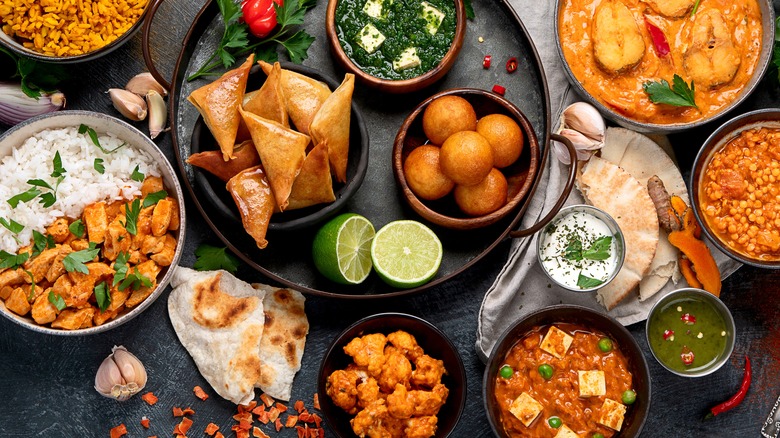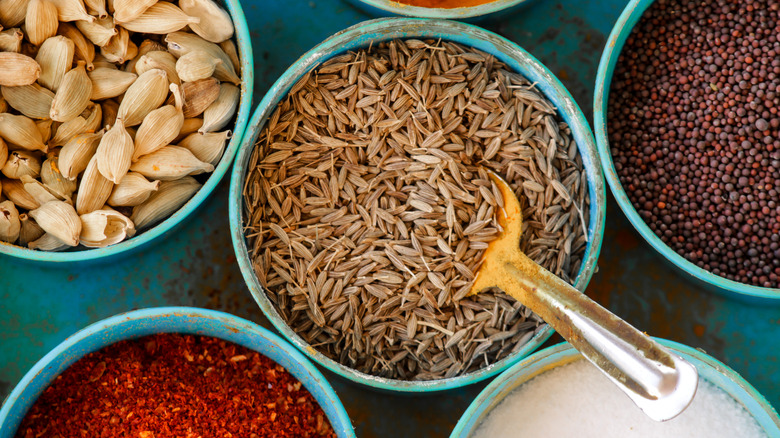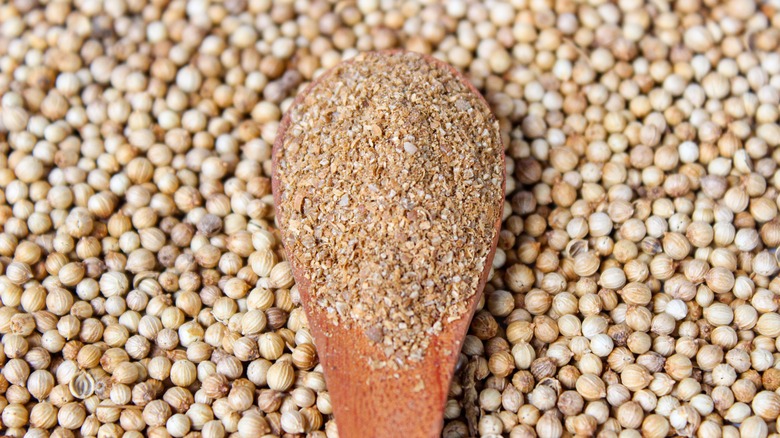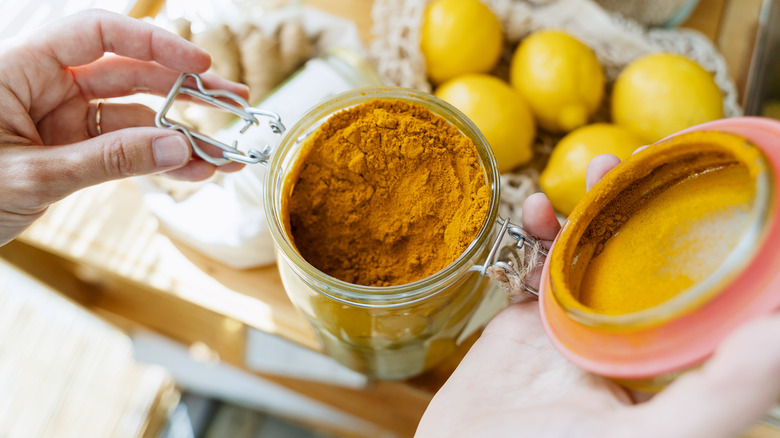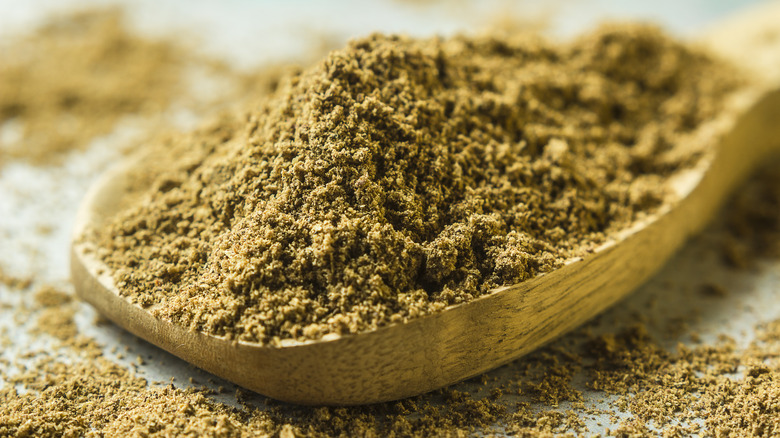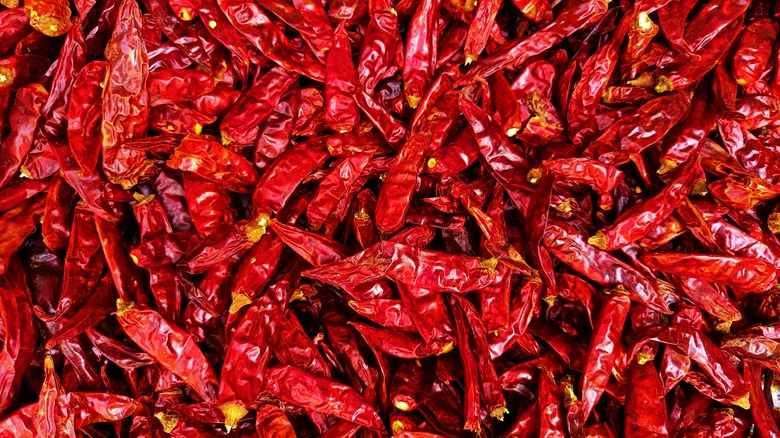The 5 Key Spices You Need For Indian Dishes
Well-rounded in offerings of sweet and spicy flavor and chock-full of addictive, layered aromatics, there's no food quite like Indian cuisine. While it's a great choice for a night out, how do you recreate the same delicious flavor of your favorite restaurant dishes at home?
Varun Inamdar, the chef and owner of 27 Degrees in West Singapore, Anokhi Bar & Grill in Shanghai, and New Light Sopore in Kashmir, gave Chowhound some exclusive tips. Inamdar's culinary expertise is also prominently featured on the popular YouTube channel Rajshri Food, which shares 100% vegetarian recipes for home cooks to try themselves. To help us all craft our favorite Indian dishes at home, Inamdar shared the five key spices he thinks chefs need. Whether you're making appetizers like samosas or dishes like batata nu shaak, let's dig into those base ingredients.
Cumin and mustard seeds are the basis of many dishes
Cumin, also known as jeera in India, and mustard seeds, or rai, form a common spice combination that brings depth to most popular Indian dishes. Chefs often temper these spices when using them in savory meals. A common cooking technique in Indian cuisine, tempering involves combining spices in a pan with hot oil to extract their essences, making for a higher concentration of flavor. This process also brings flavor into the oil, which, when combined with the other ingredients for a dish, can help better coat the meal with spice.
After tempering these spices, chefs can add the rest of the ingredients into the same pot to coat them in the cumin and mustard seeds, or they save the infused oil as a garnish. According to chef Varun Inamdar, this process makes for especially aromatic and tasty meals. "They add a warm, earthy, and nutty flavor to dishes like dals, curries, and stir-fries," he says. To learn more about one half of this equation, here's everything you need to know about cooking with cumin.
Coriander nicely complements other staple spices
According to chef Varun Inamdar, coriander, or dhania, the seed of the cilantro plant, is the next essential spice that chefs need to cook true Indian cuisine at home. With its mild, citrusy sweetness, coriander is the perfect complement to the deep earthiness provided by tempered cumin and mustard seeds. It's often coarsely ground and put into curries like vindaloo, spice blends (or masalas) to add complexity, or gravies to thicken them up. Whole coriander seeds are also sometimes used in the tempering process alongside cumin and mustard seeds.
Coriander is so important in Indian cooking that there was even a petition that collected thousands of signatures to designate it as the national herb of India. Find out the hype for yourself by using coriander in this paneer panini with tikka masala jam.
Turmeric lends more than just a vibrant color
Next up let's talk turmeric, or haldi. There are a lot of things you can use turmeric for in the kitchen and that extends to cooking Indian food. This beautifully hued spice does more than add color to a dish, although that is one of its main attractions. Vibrant color aside, chef Varun Inamdar also appreciates this spice for its "subtle, earthy flavor, along with [its] health benefits," he says. With its pepper and citrus flavors and capacity to reduce the risk of heart disease and cancers, turmeric adds further depth to the Indian dish of your choice and enhances all of the other flavors in the pot. Just take care not to use too much or your dish might become bitter and chalk-like.
The power of garam masala
According to chef Varun Inamdar, garam masala is "a complex blend of spices like cardamom, cloves, cinnamon, and a couple more spices [that] bring warmth and depth to dishes." This robust combination adds complex flavors to popular foods like aloo gobi and chicken biriyani. The term translates to hot blend, but that doesn't mean garam masala is spicy-hot. Instead, most of the spiciness present in a particular Indian dish can often be attributed to the last key spice on Inamdar's list: red chilies.
Don't forget the spicy red chilies
Red chilies are the final key spice chef Varun Inamdar swears by for cooking Indian dishes. They're the ingredient that provides that signature burn felt when eating many classic Indian meals. Whether powdered or whole, there's a lot you can do with this versatile pepper. "Used both for tempering and adding heat, whole red chilies give a smoky flavor, while powdered chilies provide the desired level of heat and color, depending on the variety," he says.
With all five spices together, you have a complex combination of flavors that ensures the balance of heat, aroma, and flavor beloved in Indian cooking. From curry to dal, these ingredients are the base of many fan-favorite Indian dishes. If you don't have them on hand already, now you have a great excuse to stock up.
